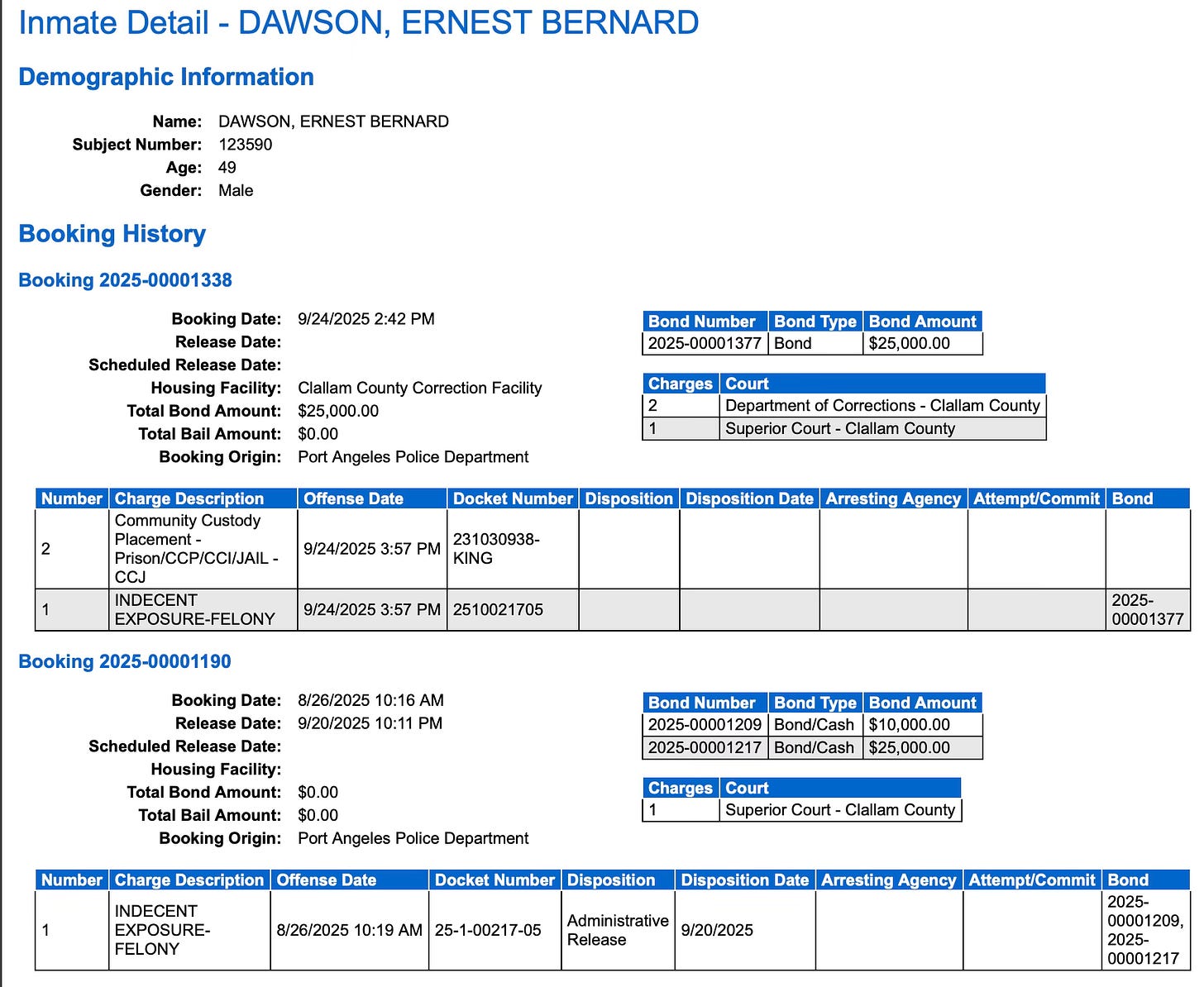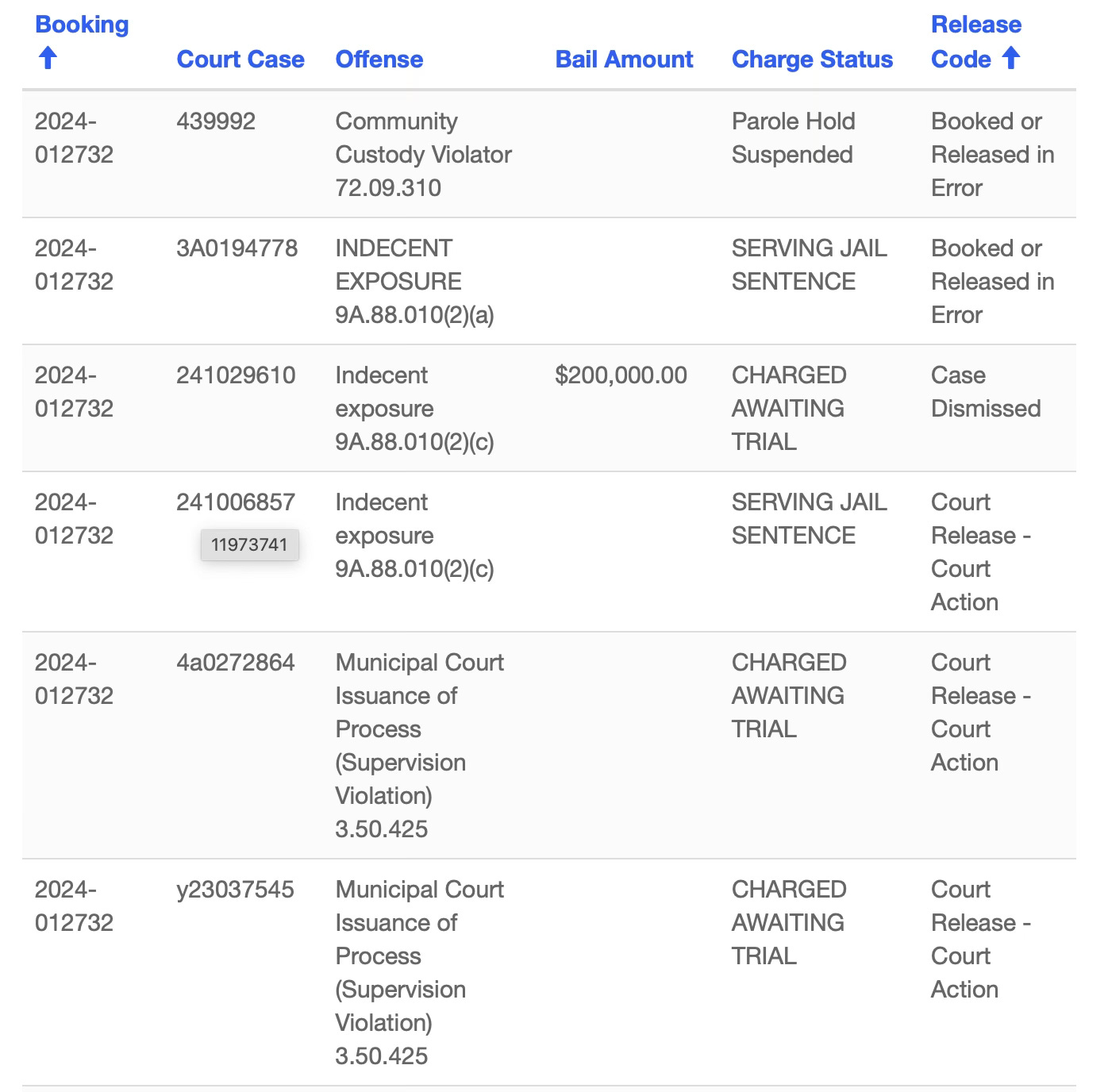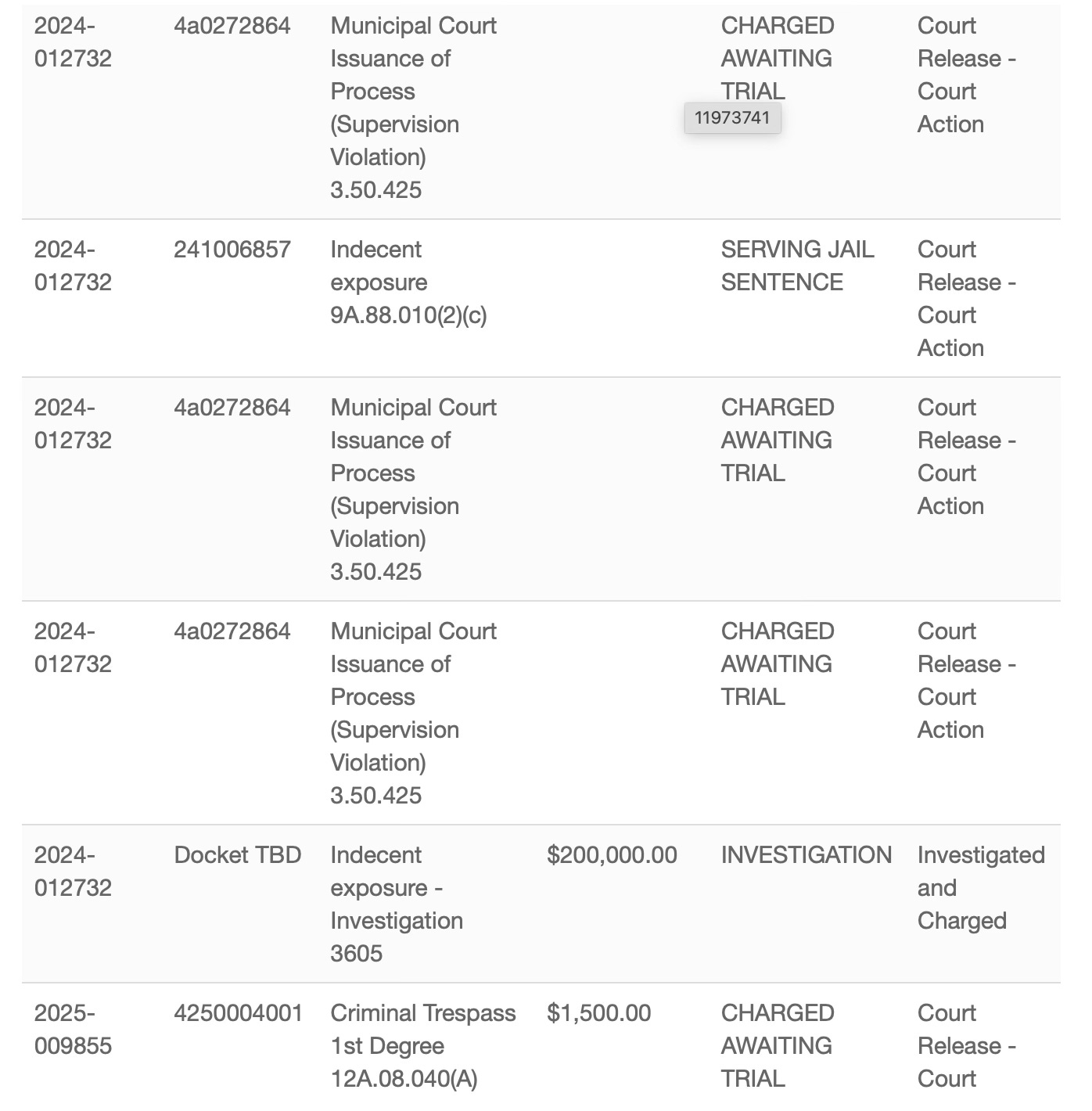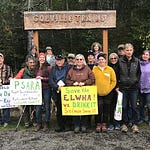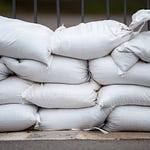Citizens are forced to track what officials won’t: repeat offenders arriving from Seattle and beyond, straining our limited resources. How long can Clallam County afford to look the other way?
After Monday’s article highlighting two recent arrests of criminals who appeared to be new arrivals in Clallam County, one subscriber pushed back:
“Two arrests a couple of days does not demonstrate the cause-and-effect relationship you claim. That relationship might be there, but you need to show a better statistical relationship if you want to attract more broad support.”
Fair question. But here’s the problem—how many arrests over how many days would demonstrate that relationship? And why isn’t this data being tracked and released to the public in the first place?
Instead, ordinary citizens are left to monitor the Clallam County Jail Roster and cross-check names against other jurisdictions. That’s how we find out that some of these individuals aren’t from here at all. When a name pops up in Bremerton, California, or Missouri, it doesn’t take long to see the pattern.
Just because officials don’t collect or publish this information doesn’t mean the problem doesn’t exist.
We’re told by NGOs and service providers that “these are just our neighbors, people down on their luck after a missed paycheck.” Fine—then prove it. If citizens are expected to prove these individuals are outsiders draining local resources, those groups should have to prove they really are helping local families who invested in this community.
Take the case of Ernest Bernard Dawson, 49. He was booked into Clallam County Jail last week for felony indecent exposure.
Dawson’s record shows:
Arrested in King County last October, released this June
Arrested again in King County on July 11, released July 23
Two months later, arrested here in Clallam County
In King County alone, Dawson has five indecent exposure charges, plus criminal trespass and burglary.
Yet here he is—having traveled two hours west from the Bainbridge Island Ferry, crossing the Kitsap Peninsula, over the Hood Canal Bridge, passing through Jefferson County, and now he has landed in our jail.
How many more examples will it take before people stop pretending this isn’t a pipeline? Clallam County is not on the way to anywhere. It takes effort to come here—especially when Everett, Tacoma, and Seattle offer more services. So why are they ending up here?
Some may be locals who’ve fallen on hard times. But many are not. These are not our schoolmates, not lifelong neighbors. They are arrivals, and they are draining resources in one of the most economically depressed counties in Washington.
We’ll keep pointing it out until it’s impossible to ignore. The only question left is: how much more can Clallam County take?



